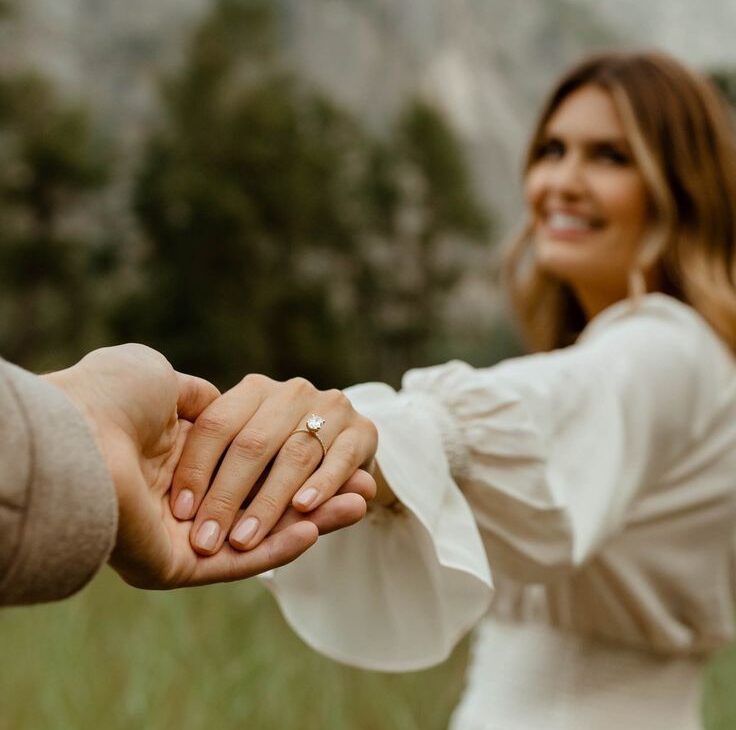Top 7 Mistakes Couples Make When Applying for a Fiancé Visa
Applying for a K-1 fiancé visa is one of the most exciting — and stressful — journeys a couple can go through. You’re not just filling out paperwork; you’re asking the U.S. government to believe in your relationship and give you both the chance to start your life together in America.
But here’s the truth: the evidence you provide outside the application is often more important than the application itself. USCIS officers don’t know you or your love story. The only way they can decide is by looking at the documents, photos, and records you submit.
Unfortunately, many couples make mistakes that can delay their case, invite a Request for Evidence (RFE), or even lead to a denial. Here are the top 7 mistakes couples make when applying for a fiancé visa — and how you can avoid them.
1. Submitting Weak or Incomplete Evidence of the Relationship
One of the biggest reasons fiancé visa cases get delayed is because couples don’t provide enough proof that their relationship is real.
- Just sending a few selfies is not enough.
- USCIS wants a full picture: travel records, hotel receipts, flight itineraries, chat logs, call histories, gifts, letters, and affidavits from family or friends.
- The stronger your evidence, the more “believable” your story becomes.
Tip: Think of it like creating a scrapbook of your love story. The more consistent and natural the evidence looks, the easier it is for the officer to trust your case.
2. Errors on the I-129F Petition
The I-129F form is the official starting point of the fiancé visa process — but it’s surprisingly easy to make mistakes.
Common errors include:
- Misspelled names or mismatched dates.
- Leaving questions blank.
- Mixing up addresses or prior marital history.
Even a small error can lead to delays, RFEs, or outright rejection.
Tip: Double-check everything before filing, and when in doubt, get professional help. But remember: the form itself is just the container. The evidence you include is what tells your real story.
3. Not Showing You Met in Person
A critical requirement for the K-1 visa is proving you’ve met in person within the last two years.
- Some couples forget to include boarding passes, hotel stays, or passport stamps.
- Others try to rely on exceptions, which are rarely approved.
Tip: Always document your visits with both official records (tickets, receipts) and personal proof (photos, chat history around the trip).
4. Submitting a “Cookie Cutter” Love Story
Officers can spot copy-and-paste love stories a mile away. If your relationship description sounds too generic — “we met online, fell in love quickly, and now want to marry” — it won’t stand out.
Tip: Share your unique story. How did you meet? What makes your relationship special? What challenges have you overcome together? Authenticity matters more than polished language.
5. Rushing Into Marriage Before the 90-Day Rule
Once your fiancé(e) enters the U.S. on a K-1 visa, you have 90 days to marry.
Some couples panic and marry too quickly, while others forget about the deadline. Both can cause issues:
- Marrying too fast can look like you’re only trying to satisfy immigration, not build a real partnership.
- Marrying after the 90 days can invalidate the visa.
Tip: Plan ahead. Celebrate your wedding within the 90 days, but don’t let the pressure take away from the meaning of your commitment.
6. Forgetting About Financial Requirements
The U.S. citizen petitioner must show that they can financially support their fiancé(e). This is done through the Affidavit of Support (Form I-134, and later Form I-864 after marriage).
Common mistakes:
- Not including tax returns or pay stubs.
- Underestimating income requirements based on household size.
- Thinking USCIS won’t check carefully.
Tip: Prepare your financial evidence early. If your income isn’t enough, consider a joint sponsor — but make sure that sponsor has strong documentation.
7. Treating the Application Like a Checklist Instead of a Story
This is the most important mistake of all. Many couples think the application is just about forms and signatures. In reality, USCIS is evaluating whether your relationship is real and lasting.
The forms are just the framework. It’s the evidence outside the application — the chats, trips, photos, and personal details — that create a believable story.
Tip: Before submitting, ask yourself:
- If a stranger read this packet, would they feel convinced that our relationship is genuine?
- Does our evidence show the depth, duration, and reality of our love story?
Final Thoughts
Applying for a fiancé visa isn’t just a legal process — it’s telling your love story in a way the U.S. government can understand.
Couples who fail often do so not because their relationship isn’t real, but because they didn’t present it clearly enough. Remember: the evidence outside the forms is just as important — if not more — than the forms themselves.
By avoiding these 7 mistakes, you can give your application the best chance of success and focus on what really matters: building your life together.
At US Immigration Consultants, we help couples craft strong, believable fiancé visa cases that stand out. From organizing your love story evidence to preparing for the interview, our team guides you step by step.
📞 Call us today at 855-963-0988 or visit www.usimmigrationconsultants.net to start your journey toward a future together.



